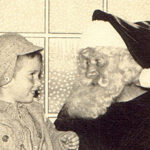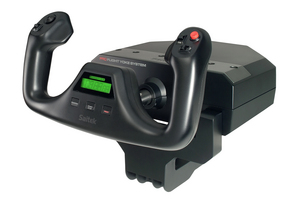Did Santa bring you a shiny new indoor remote control (RC) helicopter? Are your first flight lessons going to occur on Christmas morning? My very first indoor RC helicopter lasted for a total of five minutes. Those minutes consisted of —
1) Me hitting the throttle,
2) The remote control helicopter hitting the ceiling,
3) Me cutting the throttle,
4) The remote control helicopter hitting the floor, and
5) Me hitting the throttle,
6) The remote control helicopter spinning violently into furniture, and
7) The tail rotor breaking in half.
8) The useless helicopter spinning around in uncontrollable circles.
The $20, I spent were gone and the helicopter is sidelined until I can buy another tail rotor somewhere on the Internet. I had to buy another helicopter to enjoy the fun of indoor flight. Hopefully, I can help you avoid a similar fate with your indoor remote control helicopter. Here is are some tips on desirable facilities and test flight plans that you can use with your indoor remote control helicopter.
Before conducting test flights, you’ll need some training. First, I’d suggest reading the directions thoroughly to under your aircraft and its controls. Next, I’d suggest searching for videos of your aircraft in flight on YouTube.com or the manufacturers website. Video of your indoor RC aircraft can be an invaluable way to learn how it flies and handles without risking your multi-dollar investment in miniature rotary wing aircraft.
Next you’ll need a proper test flight facility. Ideally, you’d like to be in a minimally furnished room with thick carpets and a cathedral ceiling free of obstacles. You don’t want any obstacles or solid objects in the immediate vicinity of your spinning rotor blades. You should also pick a place that is free of family pets and people. While an indoor helicopter is undoubtedly made of cheap, lightweight, materials the rotor blades do spin very fast and could cause an injury if they struck someone in the face. You probably can put an eye out with a indoor RC helicopter. Rotor blades can also break off if they hit a solid object such as a table leg or get caught in the heavy fabric of a hanging coat. I also suspect that an indoor RC helicopter could knock over a wine glass or cause any number of kitchen disasters. You can spare yourself grief by picking a clear, clean, area for flying. If you crash, a thick carpet can cushion the fall and help avoid breakage. If your helicopter has insect like legs instead of skids or wheels, you may want to put down a towel or other flat object with a tight weave to avoid getting the legs momentarily caught by the carpet on take off.
The objective of your first indoor RC helicopter flight test should attempt to achieve the capability to hover at a stable altitude. For this flight, you will want to focus on controlling the throttle. Even the cheapest indoor RC helicopter has a surprisingly powerful engine. If you gun the throttle, your helicopter will almost certainly whack the ceiling. However, if you apply the throttle slowly, you should be able to get your helicopter to hop into the air and stay at a lower altitude. If you can stay at a relatively low altitude, there is less chance that your indoor RC helicopter will break in a crash. In your first test flight, expect your helicopter to spin, but see if you can reach and hold an altitude of 2 to 3 feet off of the floor. Once you can hold an altitude, try to climb, then return to your low altitude and slowly cut the throttle to land. Your first test flight can be short. You should be able to master throttle control and hover in less than a minute.
The objective of your second test flight is to trim your indoor remote control helicopter for directional flight. You should be able to return your helicopter to a stable low altitude hover. Once you are hovering, you’ll probably notice that your helicopter is spinning in the air. It’s a natural tendency for helicopters. To overcome it, your remote control should have a knob or buttons for trimming the helicopter. If you have a trim knob, rotate it a little in the direction opposite of the spin until the helicopter straightens up. If you rotate the knob in the direction of the spin, you will only increase the speed of the spin. Once you have trimmed the miniature aircraft for flight, you can land again and plan your directional flight.
The objective of your third test flight is to fly from point A to point B. Set your helicopter on a landing pad and then create another landing pad several feet away. To make your flight, bring your helicopter to a hover as in your first flight, trim the helicopter if needed as shown in the second flight, and then press the directional control forward to dip the nose and start flying. Unfortunately, most inexpensive toy indoor RC helicopters will tend to meander in flight. If the helicopter turns in the wrong direction, point the flight control stick in the direction you want the aircraft to fly. Gentle corrections with the stick should bring the craft back on course. Once you’ve reached your objective, level out and gently cut the throttle to land.
You have learned your basic flight maneuvers and finished your test flights. You’re off into the wild blue yonder of the family room!




